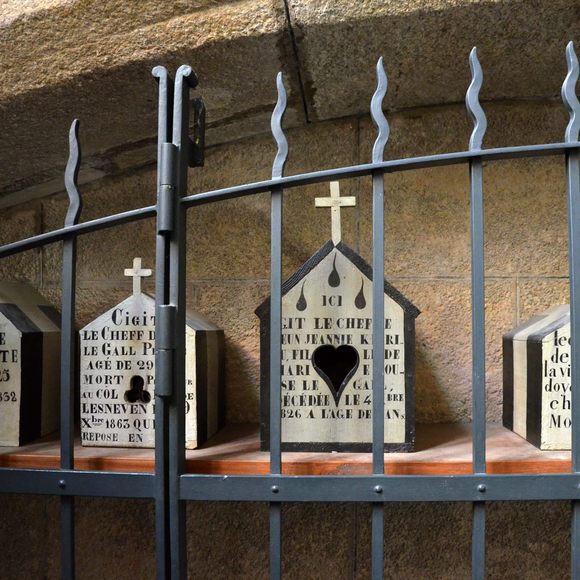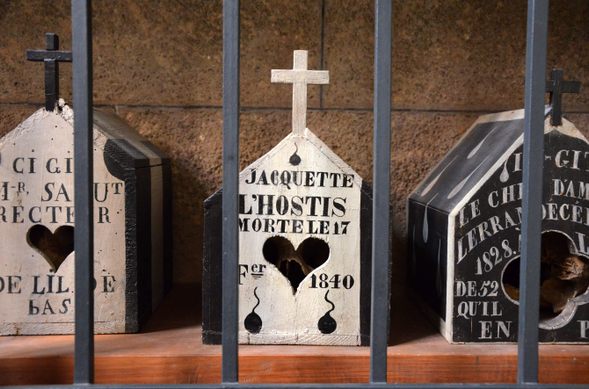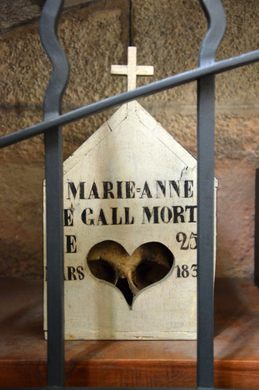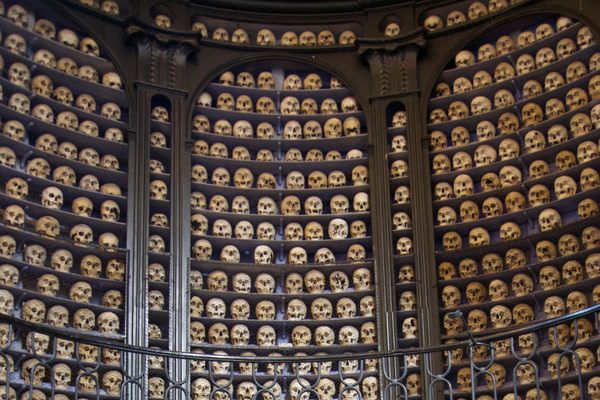AO Edited
Les Étagères de la Nuit (Shelves of the Night)
Each of these hand-painted wooden boxes, which date to between the 16th and 19th centuries, contains a genuine human skull.
Located in the Saint-Paul Aurélien cathedral in Saint-Pol-de-Léon, Les Étagères de la nuit (“Shelves of the night”) contain 31 “skull boxes” that date from the 16th to the 19th centuries. Each box contains one genuine human skull, most of which you can have a quick peek at through a heart- or trefoil-shaped hole.
Skull boxes were commonly used to keep a track of the deceased while clearing out the graveyards in order to leave space for new tombs. Five years after the body had been buried, when the remains had decomposed, the bones were removed from the grave and stored in the ossuary.
While the bones themselves were usually mixed up, the skulls were treated differently. If the deceased’s identity was known, their skull was put in a small wooden reliquary. Each box was then hand-painted, displaying the deceased’s name or initials, as well as their date of death.
While most of the boxes are painted in black or white, the shapes, patterns, and sizes of the boxes do vary from one another. However, these reliquaries are often in the shape of a tiny chapel, with a Christian cross mounted on top of them. You can see the occupation and a brief memento mori written on the front of some of the boxes too. Some boxes are adorned with common funerary symbols, such as tears of grief, a sculpted hourglass, or even a skull. A gothic feast for the eyes!
The skulls are from all ages, gender, and social class: monk, doctor, education officer, local lord, but also baker or child. Keeping the skulls of the deceased used to be pretty common in Brittany, especially in the north (Côtes d’Armor) and in the west (Finistère). This practice lasted until the early 20th century but eventually disappeared due to religious concerns.
Saint-Pol-de-Léon is home to a good half of the remaining Breton skull boxes. Sadly, the number of skull boxes has diminished through time because of theft.
Know Before You Go
The skull boxes are kept behind a wrought-iron gate, in a tomb niche located in the cathedral's right ambulatory.
On the reliquaries, you can sometimes read “d.c.d”: it stands for décédé·e, the French word for “deceased”, while ci gist and ci gît mean “here lies.”


















Follow us on Twitter to get the latest on the world's hidden wonders.
Like us on Facebook to get the latest on the world's hidden wonders.
Follow us on Twitter Like us on Facebook